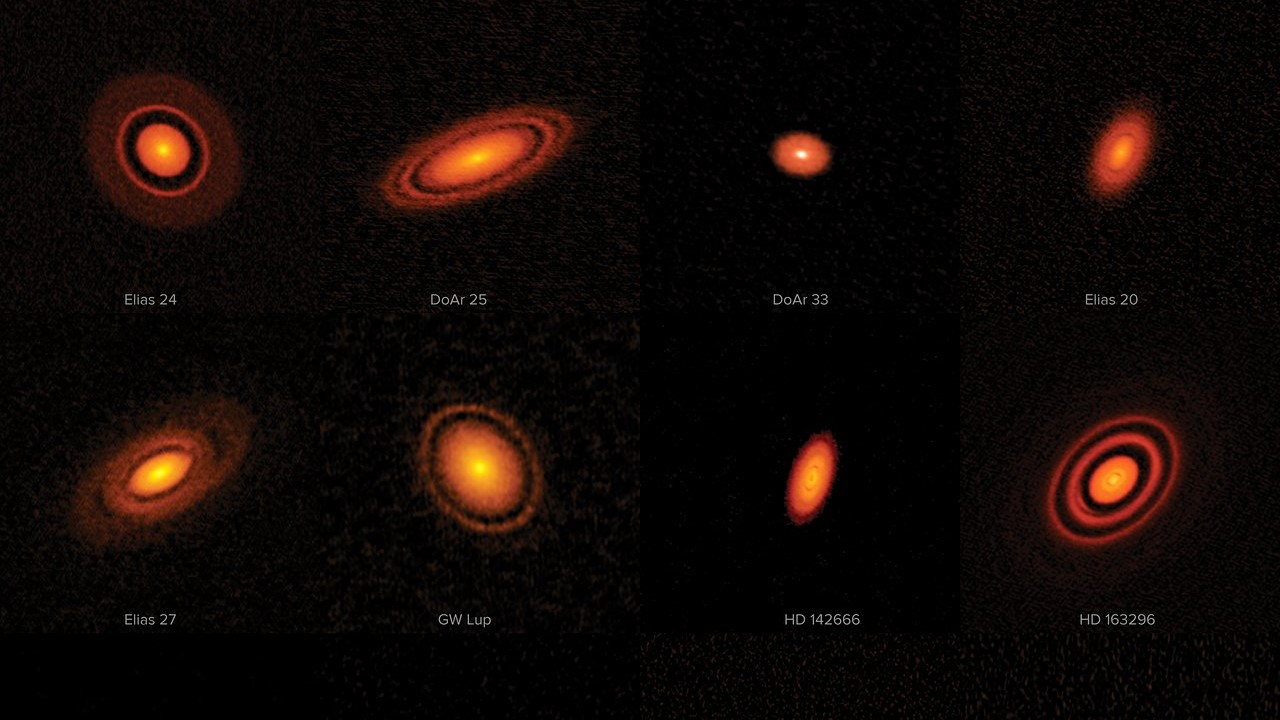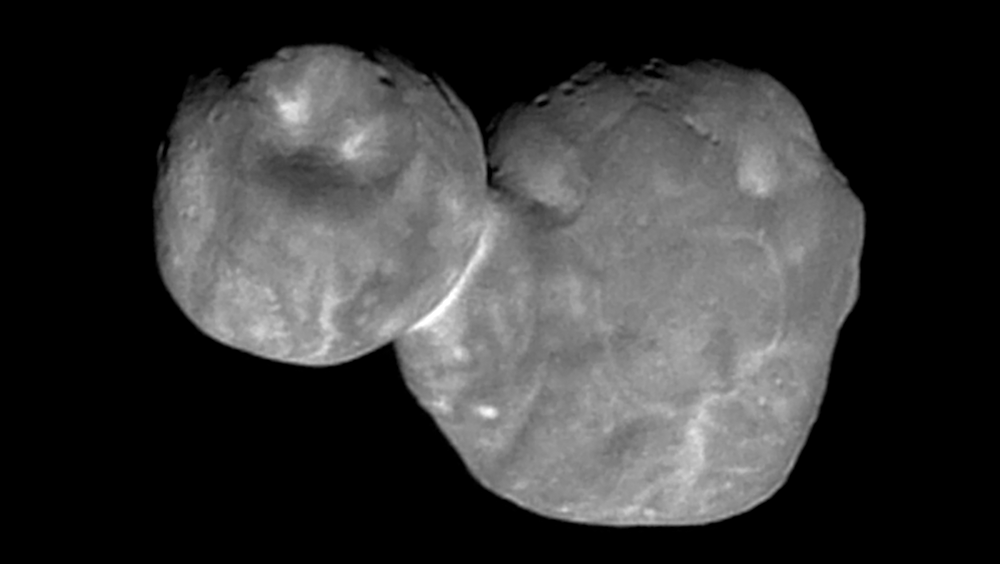Five years after spotting the first known object from beyond our solar system passing through, scientists are still figuring out what the strange object says about planetary systems.
Marauding ice giant planets like Neptune could be flinging many trillions of small bodies into interstellar space, some of which visit our solar system, as ‘Oumuamua notably did in 2017. If true, then the population of such rogue objects moving between the stars could be in the hundreds of trillions of trillions (that’s a digit followed by some 26 zeroes).
‘Oumuamua was discovered on Oct. 19, 2017, having arrived from interstellar space, where it is headed once more after swinging through our solar system. And the existence of small bodies visiting from interstellar space wasn’t a surprise. In fact, interstellar interlopers such as ‘Oumuamua and Borisov, the only two discovered so far, had been predicted long before.
“We know that when the solar system was forming, several dozen Earth masses’ worth of small, icy bodies would have been ejected into the interstellar medium,” Greg Laughlin, an astronomer at Yale University, told Space.com. “So if you take our solar system as a representative example, then you would expect to have quite a bit of stuff drifting through interstellar space.”
Related: ‘Oumuamua: The solar system’s 1st interstellar visitor explained in photos
The mechanism that ejects these myriad small bodies is the result of planetary migration, in particular the rampage of giant planets. In 2005 astronomers proposed the “Nice model,” so named because the astronomers who developed it worked at the Observatoire de la Côte d’Azur in Nice, France. The Nice model depicts how interactions within a rich disk of asteroids and comets prompted Saturn, Uranus and Neptune to migrate outward and Jupiter to migrate inward slightly over hundreds of millions of years.
The Nice model has since fallen out of favor somewhat, to be replaced by similar alternatives such as the “Grand Tack” model, which describes how Jupiter initially moved inward, only for Saturn’s gravity to stop it and pull it back. But according to Laughlin, in the context of interstellar objects, it doesn’t matter which model is right.
“Any model that has any sort of movement of giant planets as they are forming amidst a large sea of planetesimals is going to produce interstellar objects,” he said.
When planets stir up a neighborhood
Laughlin and Caltech astronomer Konstantin Batygin coined the term “throw line” as a description of where such ejections can take place.
“The ‘throw line’ is just a riff on the term ‘snow line,'” Laughlin said, referencing the distance from a star where water is more stable as ice than as vapor. The throw line, in turn, is located where a giant planet is able to slingshot a small body with enough acceleration to achieve escape velocity from the gravitational pull from its star. The farther out the planet is, the easier this becomes because the star’s gravity decreases with radial distance.
In our solar system, according to Laughlin, the throw line is at about 372 million miles (about 600 million kilometers) from the sun, which is about the same distance as the snow line.
All four of the gas giants in our neighborhood — Jupiter, Saturn, Uranus and Neptune — are beyond the throw line, and all could have ejected bodies into interstellar space, but the process doesn’t necessarily need all four.
“It doesn’t require something as dramatic as Jupiter,” Laughlin said. “Neptune readily does the trick.”
As the most distant planet that orbits in a region where the escape velocity is low and there are plenty of icy bodies to throw around, Neptune would have acted as the solar system’s bouncer as the planet migrated outward, ejecting many of the small bodies that got in its way.
“If ‘Oumuamua is typical, then that’s suggesting that the average star has a Neptune-like planet, just like our solar system” Laughlin said, adding that there is observational evidence to support this, in the form of images taken by ALMA, the Atacama Large Millimeter/submillimeter Array, of planet-forming disks of dust around young stars. Many of these disks appear to have ring-shaped gaps in them that may have been cleared out by the gravity of Neptune-like worlds.

While this might not sound like a revelation, it is important for astronomers who have been seeking to determine just how typical, or atypical, our own solar system is compared to systems around other stars.
Many gas giant exoplanets discovered so far are so-called “hot Jupiters” and “hot Neptunes,” which have migrated inward and now orbit very close to their stars. These worlds cannot eject small bodies into interstellar space because the escape velocity that close to their star is too great. Furthermore, these systems with hot giant planets are very unlike our own solar system, whose innermost worlds are small, rocky and comparatively far from the sun.
However, the predicted abundance of interstellar objects implies that the architecture of our outer solar system, at least, may be fairly regular.
Recipe for an interstellar object
This ejection mechanism would explain conventional interstellar comets such as Borisov.
However, ‘Oumuamua was anything but conventional. Its shape was most likely that of a flattened, disk-like sliver, rather than that of a long shard as was initially suggested. We have seen a somewhat similarly-shaped body in the form of Arrokoth, the Kuiper Belt object that NASA’s New Horizons spacecraft flew past on New Year’s Day 2019.

However, most comets are not shaped like ‘Oumuamua or Arrokoth. In addition, ‘Oumuamua didn’t have a comet’s signature coma, the “atmosphere” around the comet‘s main body. Moreover, its acceleration changed as though it were being pushed by outgassing that was typical of a comet, even though astronomers couldn’t detect any outgassing.
Unconventional explanations aside, one hypothesis that Laughlin likes is the idea that ‘Oumuamua was a chunk of solid hydrogen ice. The only location where such an object could form would be in the cold core of a dense molecular cloud of gas. Such clouds, once they are gravitationally destabilized, become the birthplaces of stars, but are they cold enough to form a chunk of solid hydrogen like ‘Oumuamua?
“If the hydrogen-ice theory were true, then all of ‘Oumuamua’s properties would be straightforwardly explained,” Laughlin said. The theory suggests that ‘Oumuamua would have formed inside a molecular cloud as a much larger object that became whittled down over time. Laughlin likes to draw the analogy of a bar of soap, which begins life as thick block, but after numerous washes it reduces to a thin oblate sliver — the same shape as ‘Oumuamua.
“The problem with this theory is that it’s very hard to get the environment cold enough so that molecular hydrogen freezes out quickly enough,” Laughlin said. Molecular hydrogen freezes at about 14 kelvin — that’s 14 degrees above absolute zero, or minus 434 degrees Fahrenheit (minus 259 degrees Celsius). The cores of molecular clouds can reach similar temperatures, but the conditions would have to be just right for the hydrogen to condense quickly into a solid, and it’s not clear how regularly those conditions occur. However, if they are common, then “‘Oumuamua would have been something that was assembled before star and planet formation in its cloud took place,” Laughlin said.
One piece of supporting evidence for this lies in ‘Oumuamua’s path through space before it arrived at our solar system. Astronomers have traced it back and found that, 45 million years ago, ‘Oumuamua would have been in the same spot where a giant molecular cloud would have been about to form the stars of the Carina moving group.
A dearth of interstellar objects
If indeed ‘Oumuamua were a hydrogen iceberg, or even if it was just some freak of nature ejected from a planetary system like Borisov was, then surely space should be filled with more of these visitors from far-off stars. Do astronomers find it surprising that besides ‘Oumuamua and Borisov, we have yet to discover any other interstellar interlopers?
When ‘Oumuamua was found in 2017, astronomer Dave Jewitt of the University of California, Los Angeles, who co-discovered the first Kuiper Belt object in 1992 alongside Jane Luu, predicted that there were in the range of 10,000 interstellar interlopers in our solar system at any one time, based on the likelihood of discovering ‘Oumuamua when we did.
That estimate still holds, he told Space.com. However, Jewitt admits that he was surprised that Borisov came along so quickly after ‘Oumuamua, and is “disappointed that we haven’t had another one since.”
Laughlin is still clinging to the most optimistic scenario regarding the numbers of interstellar interlopers, but only just. The current dearth of interstellar objects “is not quite surprising yet, but it’s starting to become surprising,” he said. Based on the current discovery rate of just two in five years, he said that current estimates of the abundance of such objects should be halved.
Jewitt, however, points out that finding interstellar interlopers is difficult, even if they are visiting our solar system in vast swarms.
“Those 10,000 objects are spread over the whole volume inside Neptune’s orbit, and none of them will be detectable unless they pass close to the Earth, just as ‘Oumuamua was only noticed for those reasons,” he said.
However, the Vera C. Rubin Observatory in Chile will begin observing by the middle of this decade. With its 8.4-meter, wide-field survey telescope, it will embark on the Legacy Survey of Space and Time (LSST) and, if predictions hold true, it is expected to discover at least one interstellar interloper every year.
(Scientists are already better poised to understand these objects than they were five years ago. With the James Webb Space Telescope now up and running, astronomers have a powerful tool for studying these objects that wasn’t available when ‘Oumuamua was cutting its course through the solar system.)
“If objects like ‘Oumuamua are discovered in short order by Rubin–LSST, then that’s pointing to a large population of Neptune-like planets,” Laughlin said. “But if it finds no such objects, then the degree to which ‘Oumuamua was unusual will become more and more pronounced.”
Follow Keith Cooper on Twitter @21stCenturySETI. Follow us on Twitter @Spacedotcom and on Facebook.

